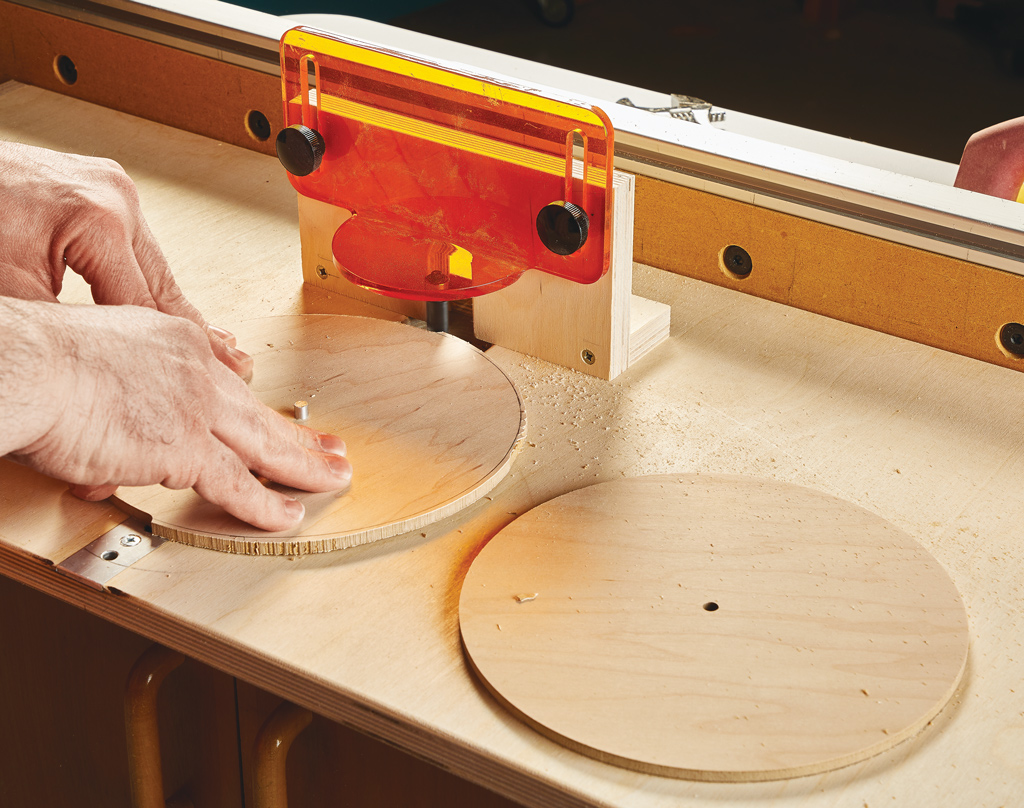If your router is attached to an insert plate there are a few adjustments to make to help you get the accuracy and results you expect from your router table. The first thing you need to do is make sure the plate fits properly in the opening. It shouldn’t move from side to side or front to back. If you find that your insert plate moves at all, you can shim the sides of the plate or the recess with tape. I prefer clear packing tape since it allows the plate to slip in and out easily. Your goal is to eliminate any “wiggle room” when the plate is installed in the table. The next thing to check is that the plate is flush with the tabletop at all four corners with a straightedge. If it isn’t, the workpiece will catch on the edge of the plate or recess.

There are some easy fixes for this. The simplest is to shim the plate with layers of tape. Add as many layers as you need to bring the insert flush with the tabletop.

Another option is to install “leveling screws” in the recess. These are just short woodscrews set into a countersunk pilot hole. Adjust the height of each screw until the plate is flush all around.

The ultimate option for leveling the router plate is to purchase a set of levelers like you see here. These are made by Kreg and fasten to the underside of the table. Then long set screws are adjusted up or down to “dial in” the height of the plate.













